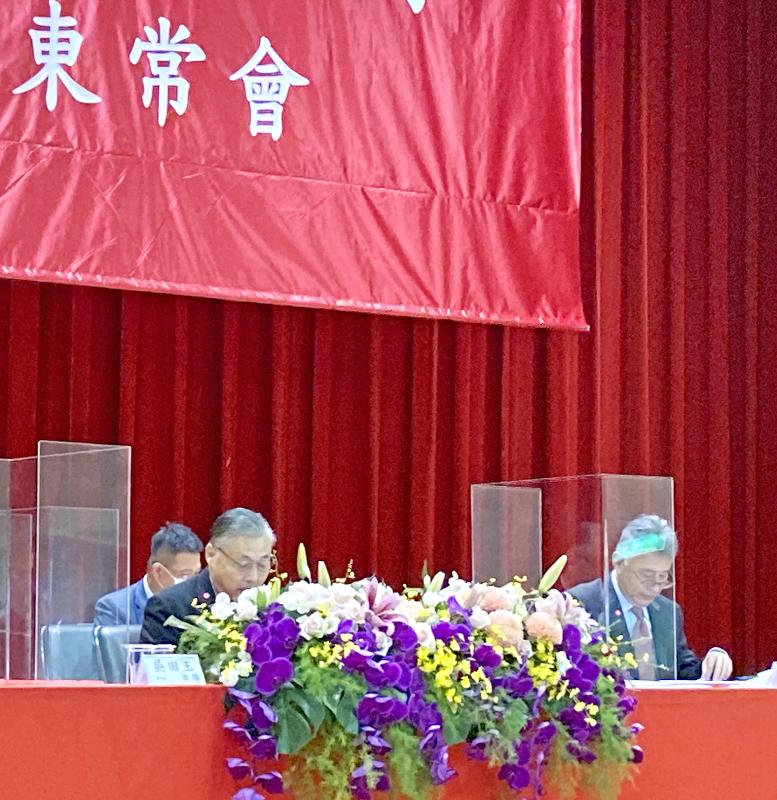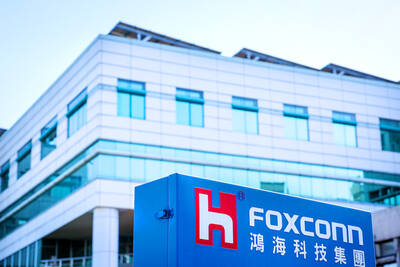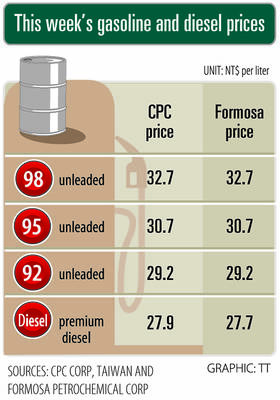ASE Technology Holding Co (ASE, 日月光投控), the world’s biggest chip tester and packager, yesterday stood firm on its forecast of annual revenue growth this year, as customers continue to show a strong appetite for its advanced technology.
Growth momentum is expected to continue from the first half of this year, when ASE’s revenue, net profit and equipment utilization all beat its expectations, it said.
In particular, the company received higher orders in the first quarter as its factories in Taiwan kept running following the nation’s quick response to the COVID-19 pandemic, it added.

Photo: Lisa Wang, Taipei Times
“We are firm about our forecast of annual growth in revenue this year,” ASE chief executive officer Tien Wu (吳田玉) told reporters on the sidelines of the company’s annual shareholders’ meeting in Kaohsiung.
Last year, ASE’s revenue rose 11.3 percent year-on-year to NT$413.2 billion (US$13.94 billion).
ASE’s low-end capacities are fully utilized and demand for high-end capacities exceeds what it can supply before September, Wu said.
The company used to provide a business guidance for upcoming quarters, but Wu yesterday declined to quantify the firm’s revenue growth guidance for this year, citing macroeconomic uncertainties, political tensions, the global COVID-19 situation and vaccine development.
“We have seen some dark clouds and uncertainty in the near term,” he said.
The company does not have a clear picture of its business outlook in the fourth quarter, Wu said.
Some capacities might become more available and production might have to be readjusted after September, he said.
However, ASE is positive about long-term prospects, as 5G technology, artificial intelligence (AI), smart manufacturing and electric vehicles are likely to drive semiconductor growth over the next few years, he said, adding that the company is prepared for the next boom in semiconductor demand.
The company last year increased equipment capital spending by US$400 million to US$1.6 billion, from US$1.2 billion in 2018, while its global peers scaled back capital spending by a combined US$700 million, Wu said.
ASE plans to spend the same amount on equipment this year, Wu said.
“We want to make that sure we are the survivor, and we want to maximize our market share after the pandemic ends,” he said.
To combat the pandemic, ASE said it aims to preserve as much cash as it can and has since March suspended the distribution of performance bonuses to about 200 top executives to cope with the fallout from the crisis, it added.
The company applied a similar measure for eight months in 2009 in response to the global financial crisis, it said.
Shareholders approved a plan to distribute a cash dividend of NT$2 per common share, which suggests a dividend yield of 2.94 percent based on ASE’s closing price yesterday of NT$68 in Taipei trading.

GREAT SUCCESS: Republican Senator Todd Young expressed surprise at Trump’s comments and said he expects the administration to keep the program running US lawmakers who helped secure billions of dollars in subsidies for domestic semiconductor manufacturing rejected US President Donald Trump’s call to revoke the 2022 CHIPS and Science Act, signaling that any repeal effort in the US Congress would fall short. US Senate Minority Leader Chuck Schumer, who negotiated the law, on Wednesday said that Trump’s demand would fail, while a top Republican proponent, US Senator Todd Young, expressed surprise at the president’s comments and said he expects the administration to keep the program running. The CHIPS Act is “essential for America leading the world in tech, leading the world in AI [artificial

DOMESTIC SUPPLY: The probe comes as Donald Trump has called for the repeal of the US$52.7 billion CHIPS and Science Act, which the US Congress passed in 2022 The Office of the US Trade Representative is to hold a hearing tomorrow into older Chinese-made “legacy” semiconductors that could heap more US tariffs on chips from China that power everyday goods from cars to washing machines to telecoms equipment. The probe, which began during former US president Joe Biden’s tenure in December last year, aims to protect US and other semiconductor producers from China’s massive state-driven buildup of domestic chip supply. A 50 percent US tariff on Chinese semiconductors began on Jan. 1. Legacy chips use older manufacturing processes introduced more than a decade ago and are often far simpler than

Hon Hai Precision Industry Co (鴻海精密) yesterday said that its research institute has launched its first advanced artificial intelligence (AI) large language model (LLM) using traditional Chinese, with technology assistance from Nvidia Corp. Hon Hai, also known as Foxconn Technology Group (富士康科技集團), said the LLM, FoxBrain, is expected to improve its data analysis capabilities for smart manufacturing, and electric vehicle and smart city development. An LLM is a type of AI trained on vast amounts of text data and uses deep learning techniques, particularly neural networks, to process and generate language. They are essential for building and improving AI-powered servers. Nvidia provided assistance

Gasoline and diesel prices this week are to decrease NT$0.5 and NT$1 per liter respectively as international crude prices continued to fall last week, CPC Corp, Taiwan (CPC, 台灣中油) and Formosa Petrochemical Corp (台塑石化) said yesterday. Effective today, gasoline prices at CPC and Formosa stations are to decrease to NT$29.2, NT$30.7 and NT$32.7 per liter for 92, 95 and 98-octane unleaded gasoline respectively, while premium diesel is to cost NT$27.9 per liter at CPC stations and NT$27.7 at Formosa pumps, the companies said in separate statements. Global crude oil prices dropped last week after the eight OPEC+ members said they would